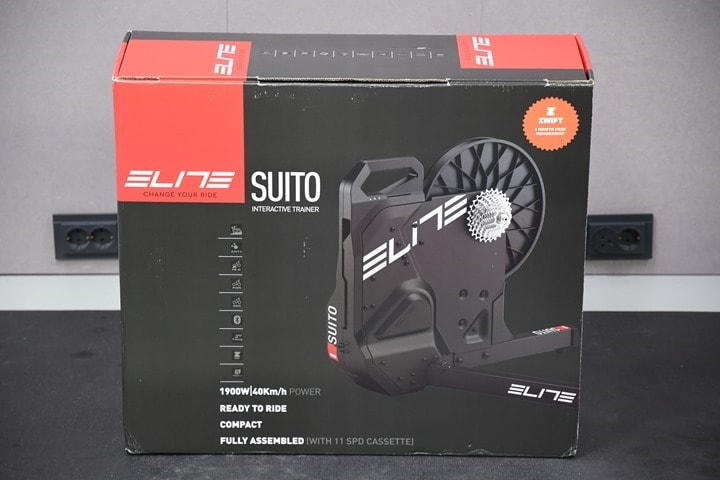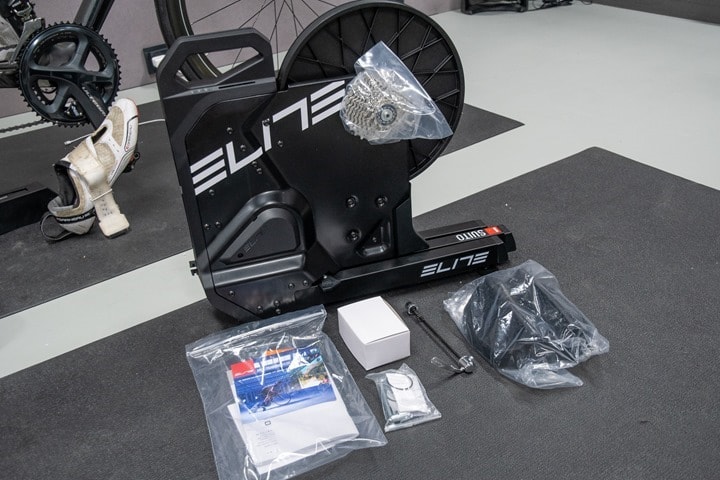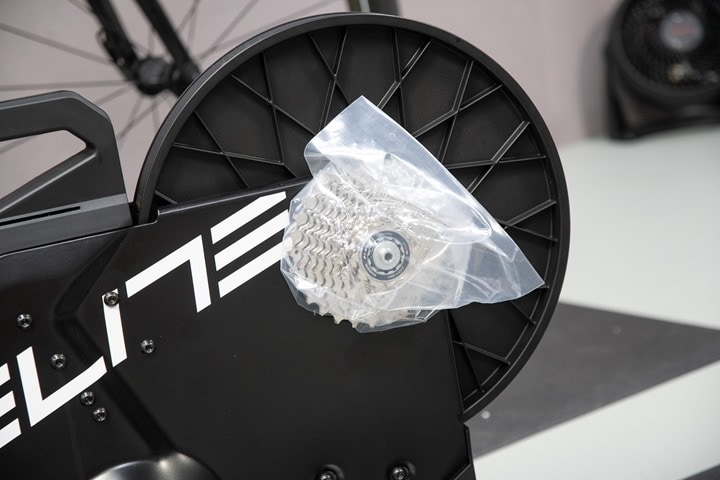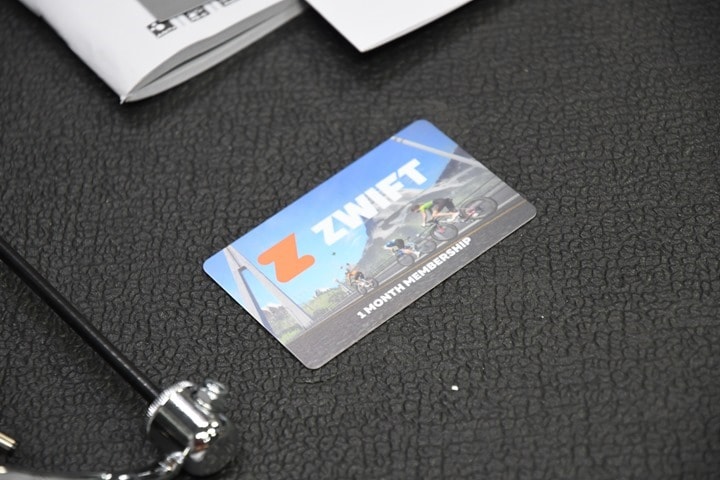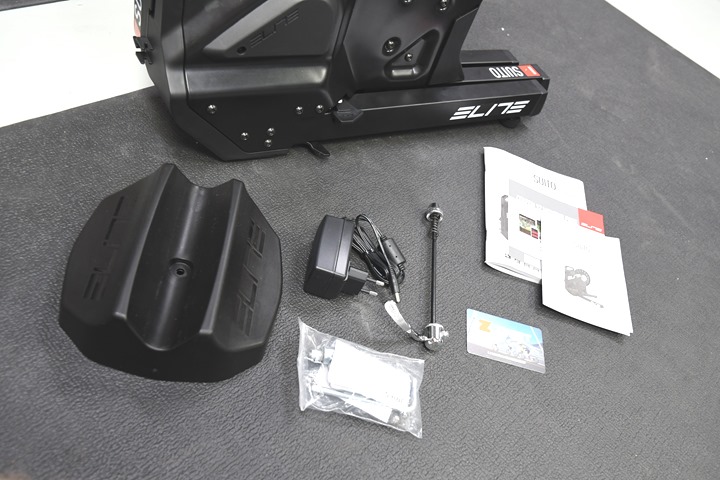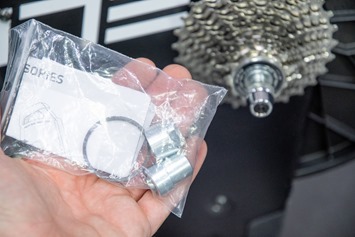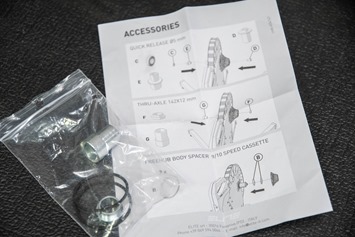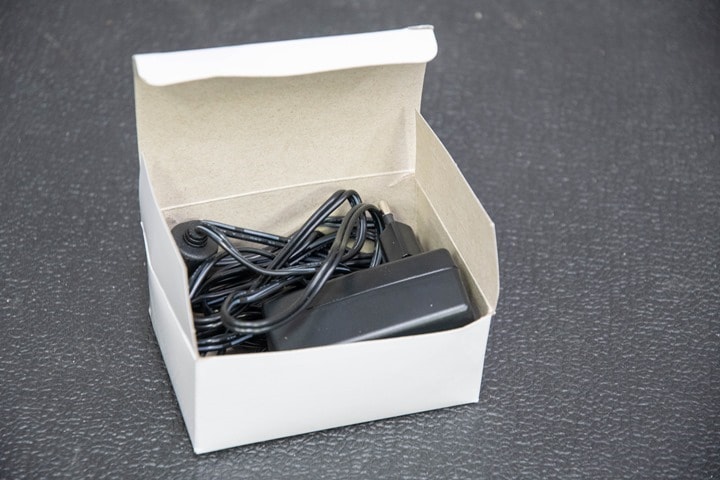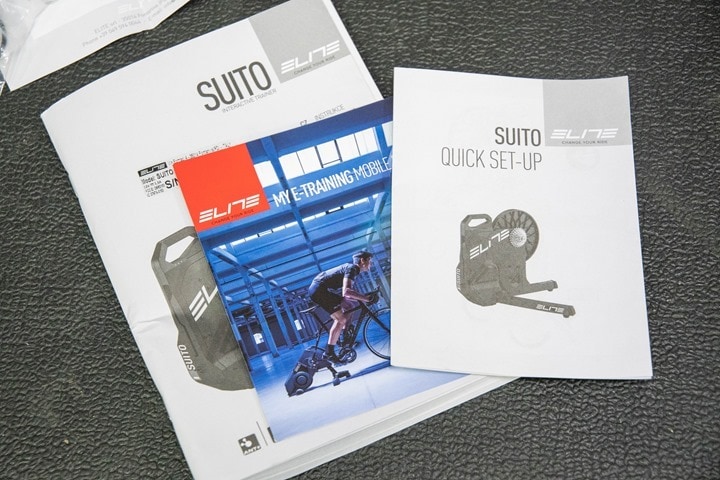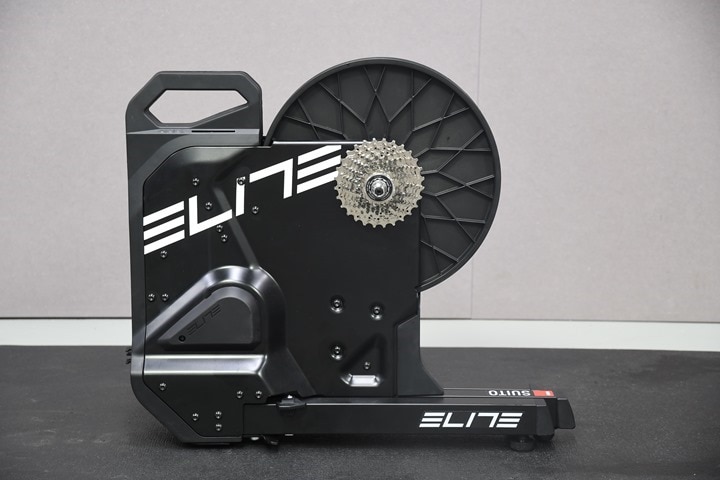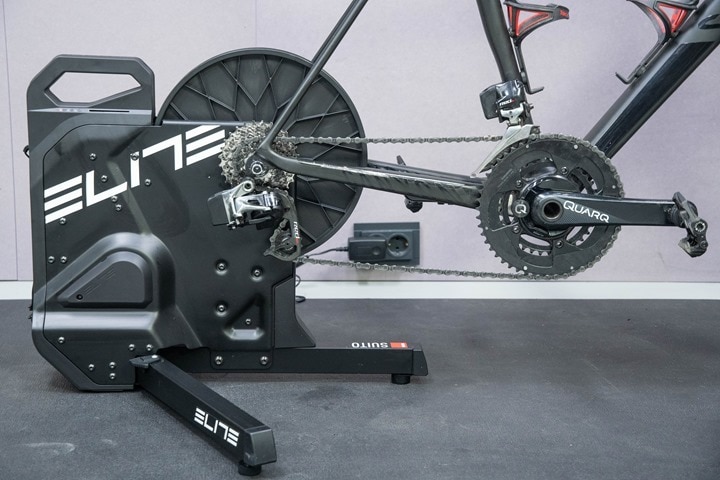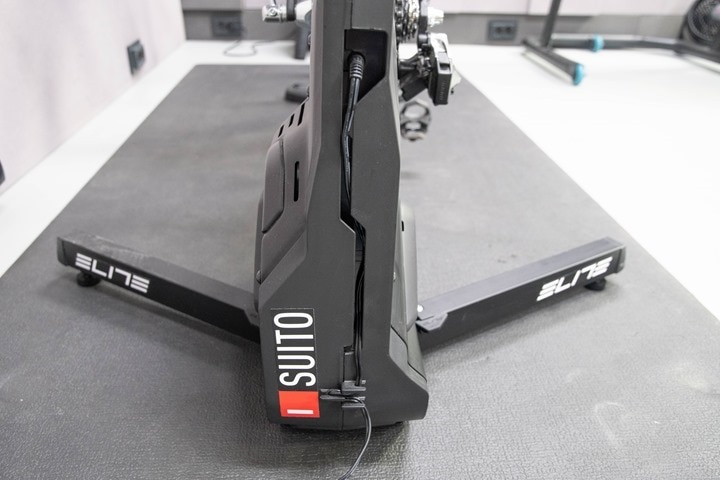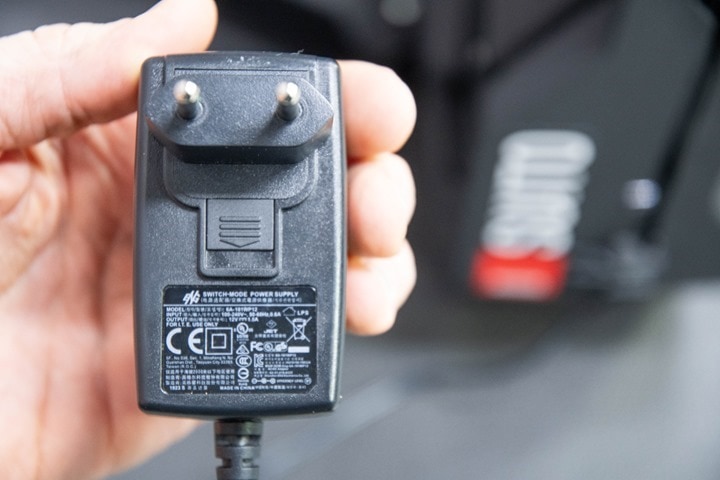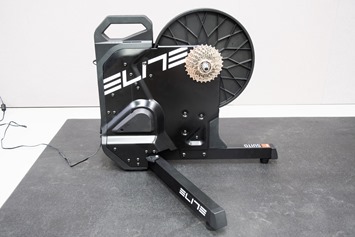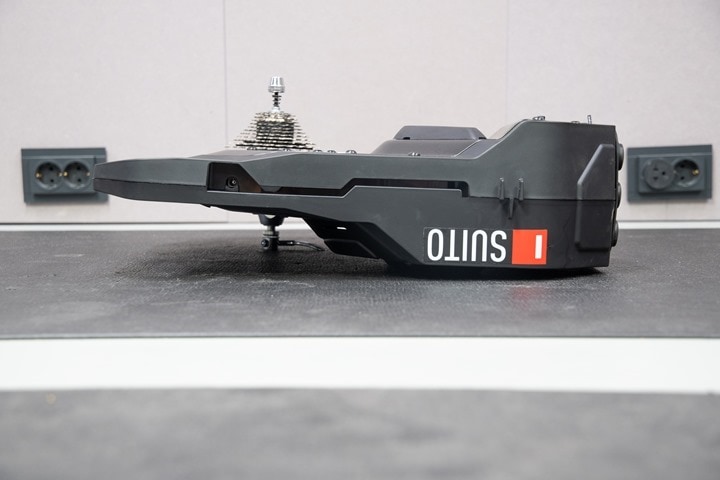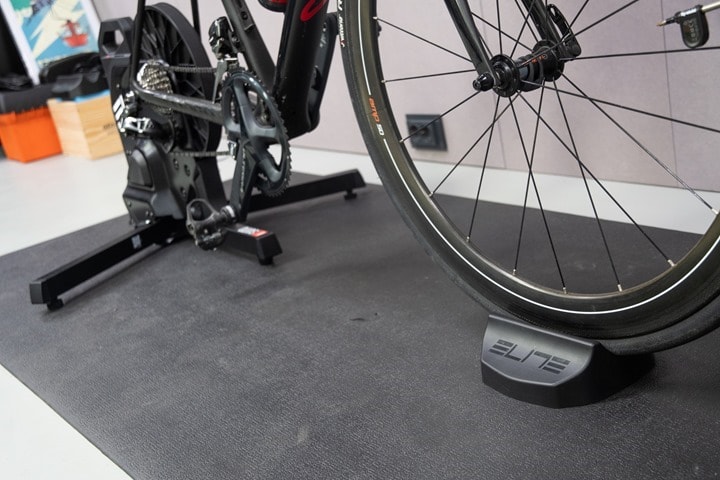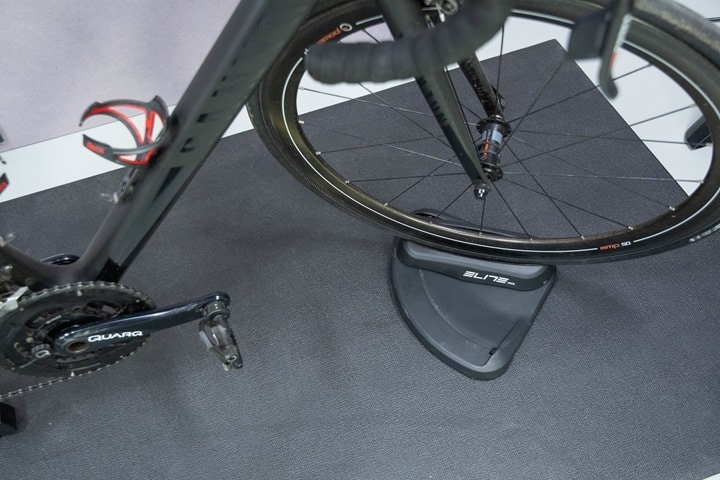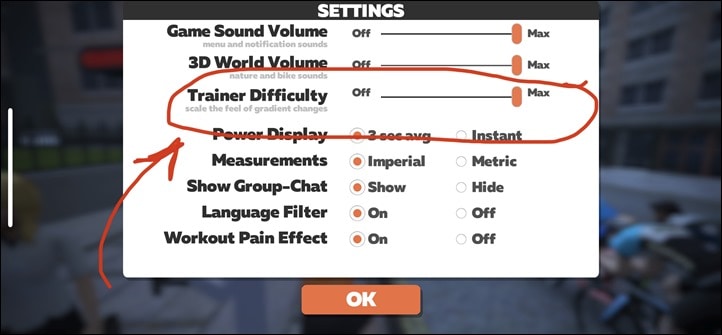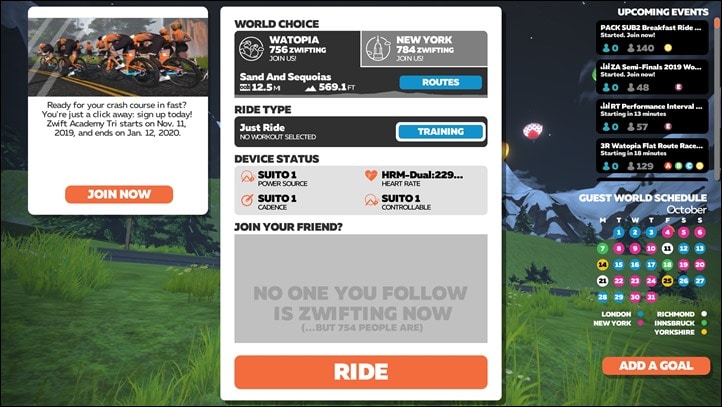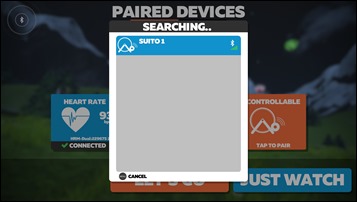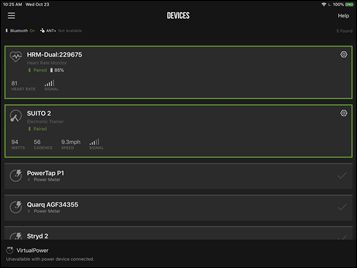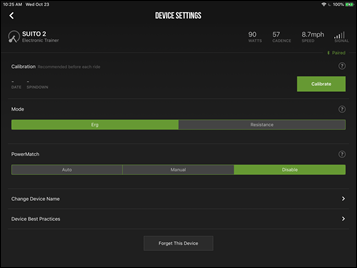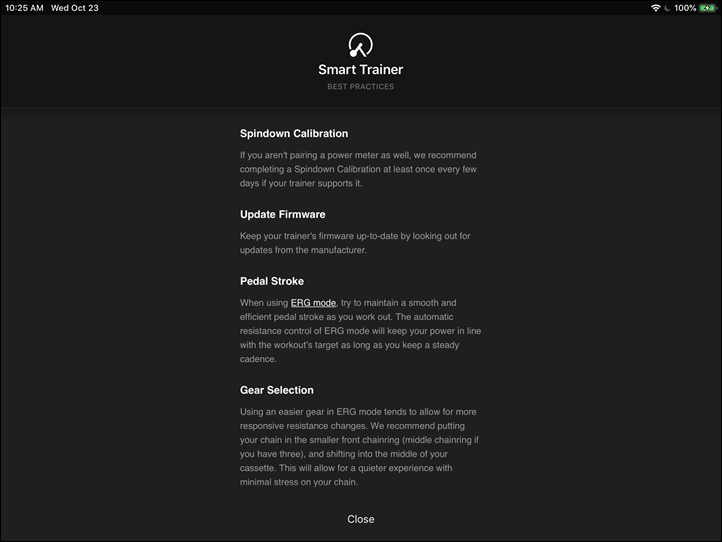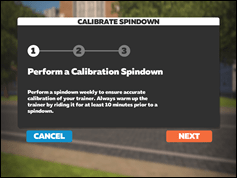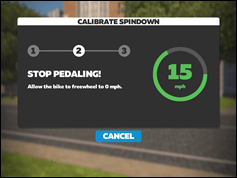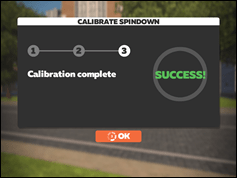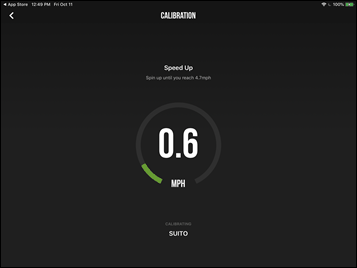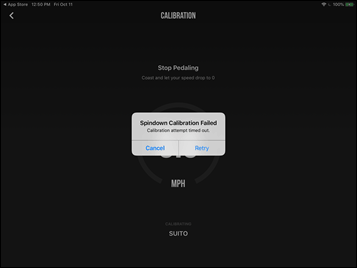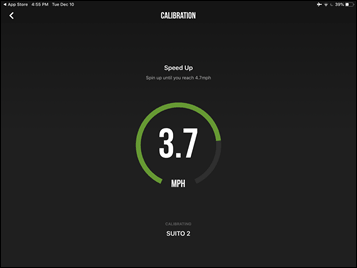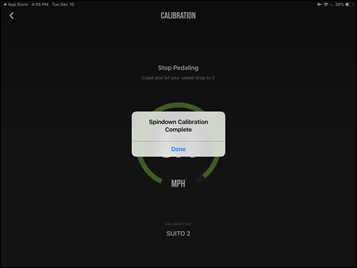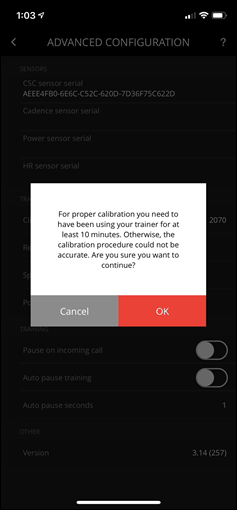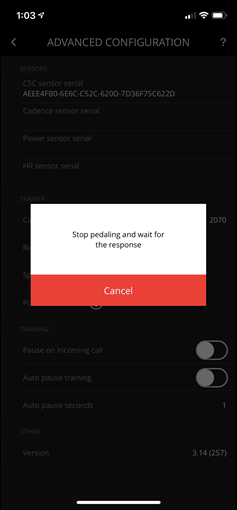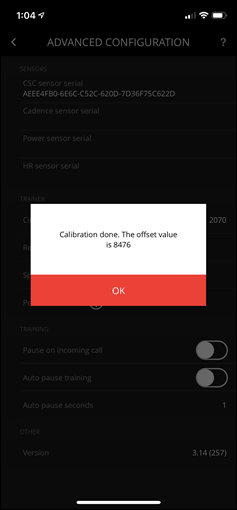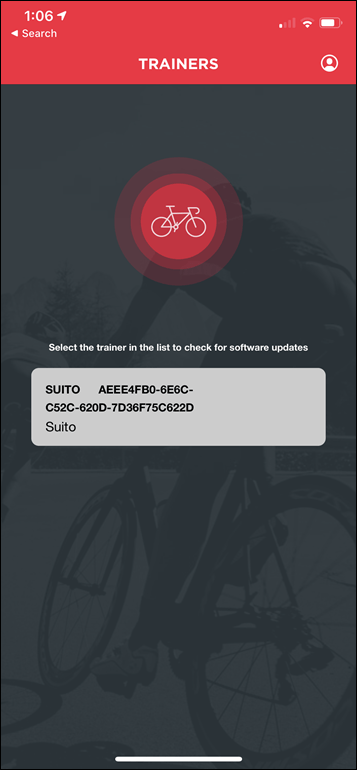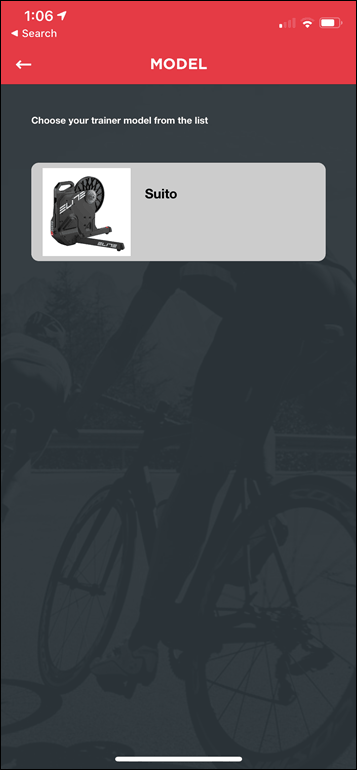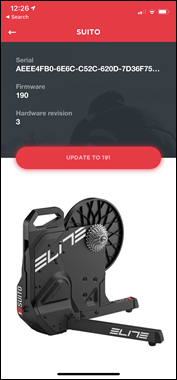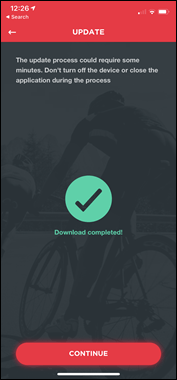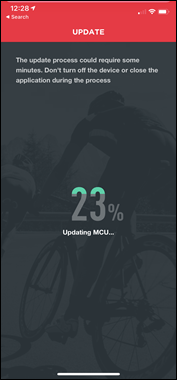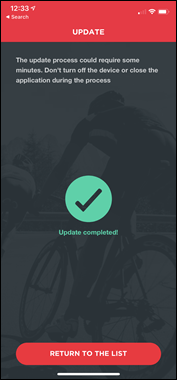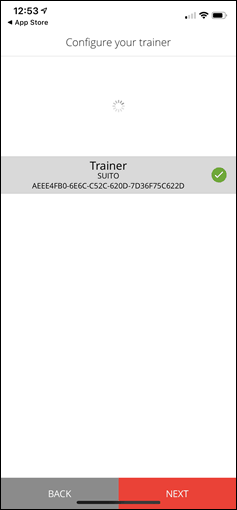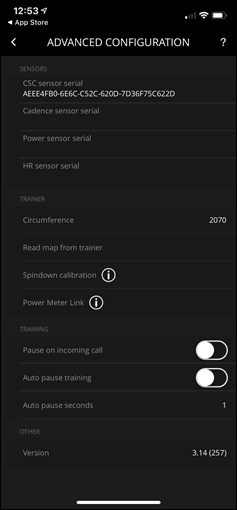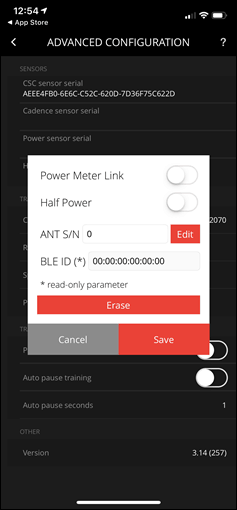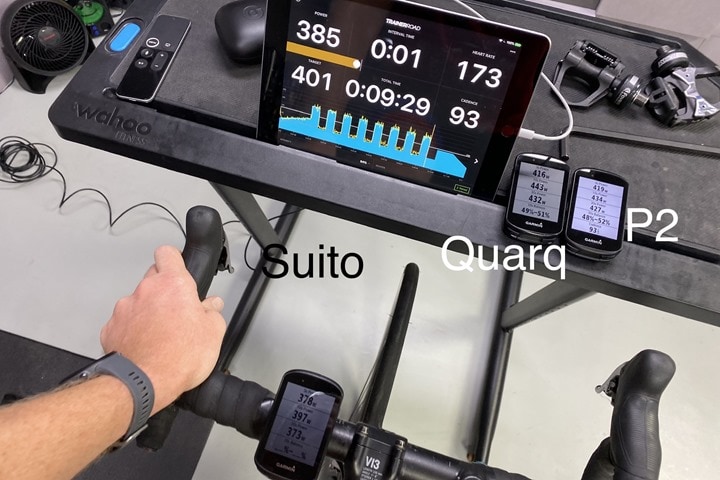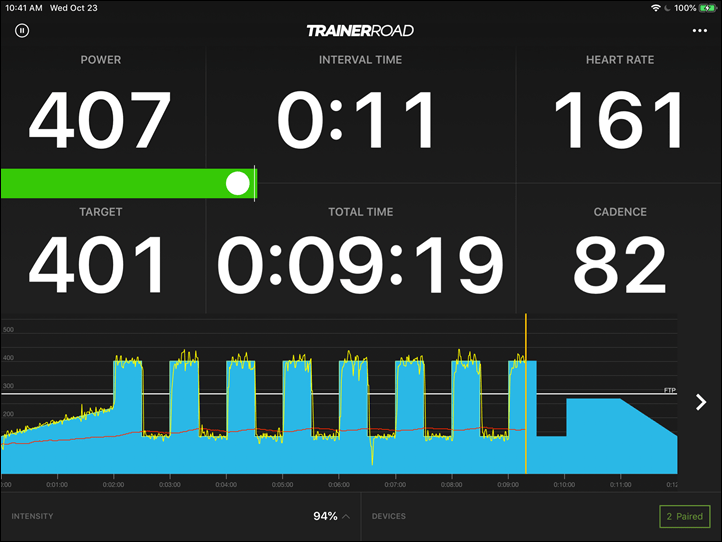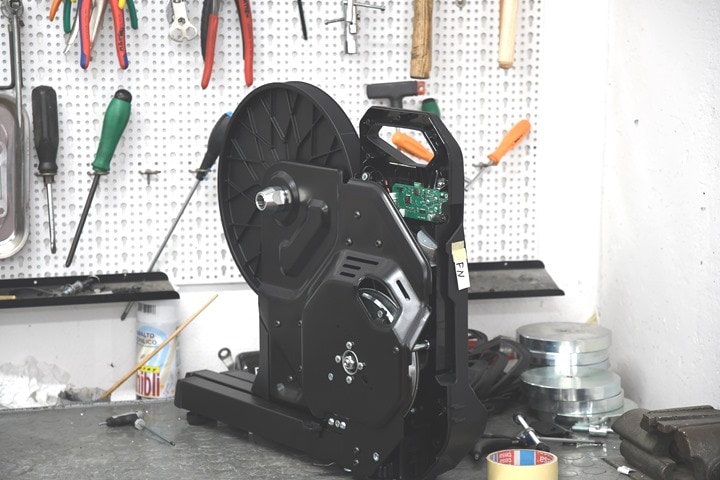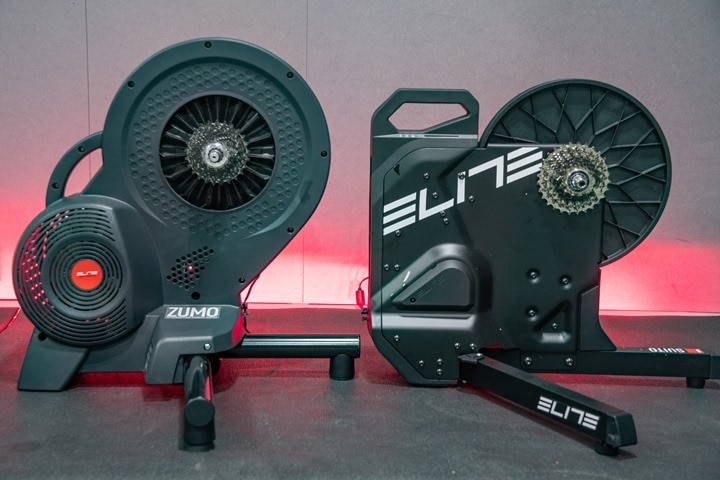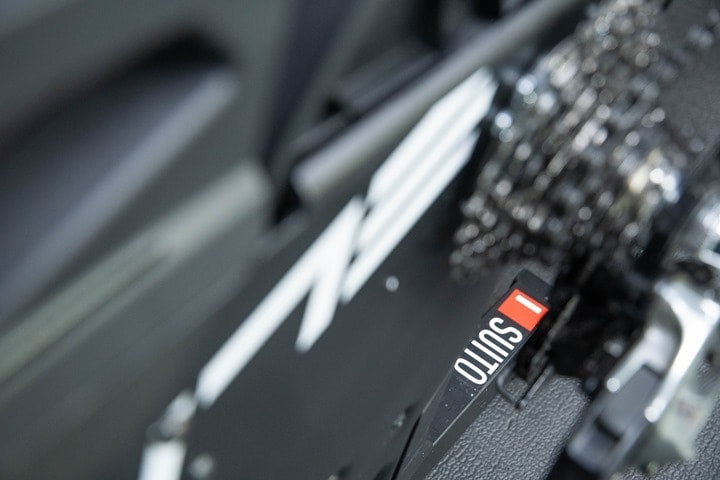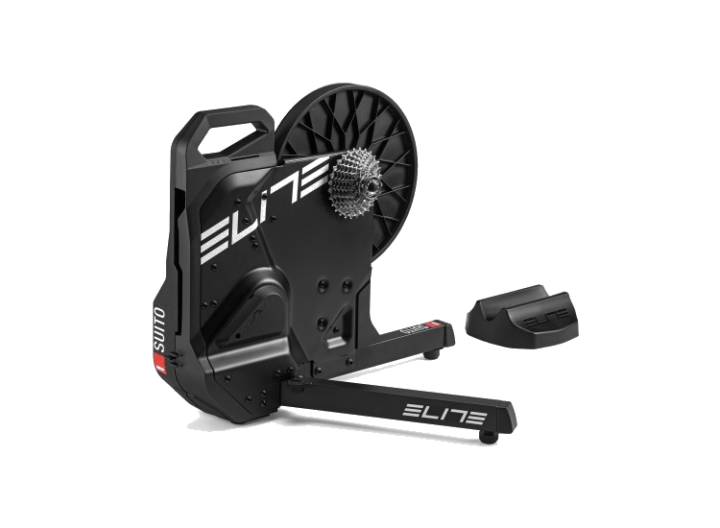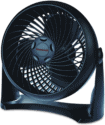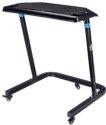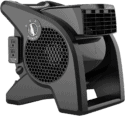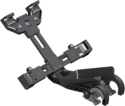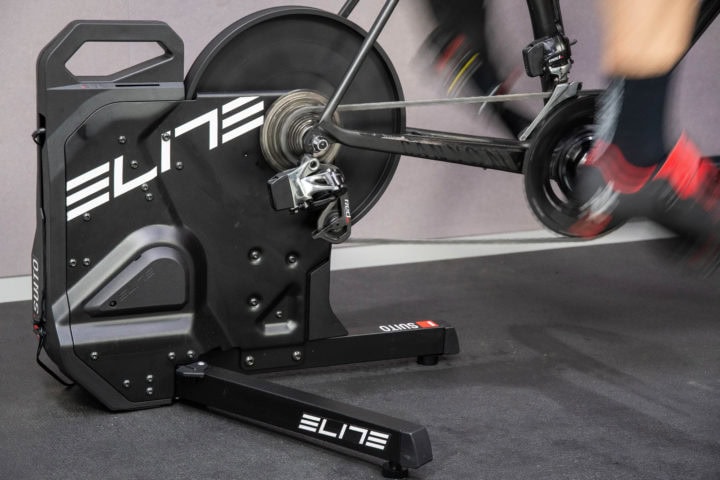
It’s been about five months since the Elite Suito was first announced back in July. The Suito made a name for itself by essentially copying the same Elite formula as a few years ago: Offer a good medium-range product that undercuts everyone else on price. With the Suito the main selling point was that the cassette was included (saving you $50-$70 in costs, depending on whether you had tools) – plus the savings in time/hassle. The only other trainer in the market that did that was the $1,199 Wahoo KICKR.
Atop that, at the time, Elite also threw in a 30-day trial of Zwift – which then was actually unique (now, not so much). It also has a very small footprint for those that wanted to store it away (or under) something. And finally – it was designed to be entirely ready to ride by just pulling it out of the box – no assembly required. Great – so it sounds like the perfect mid-range trainer at $799.
But did it live up to that hype? Well, it probably depends on when exactly you got a Suito. Like every other trainer (or indoor bike) this season, Elite joined the ‘that was rough’ club for early adopters. And I’ll dive into that a bit later on, what went wrong, what’s different now, etc…
But before we do, we’ll run through all the usual in-depth review bits. From accuracy to what’s in the box, and plenty more. As always, once I’m done with this thing I’ll get a shipping label on this loaner unit and it’ll head back to Elite. If you found this review useful, feel free to hit up the links at the end of the review.
(Note: The Elite Suite-T is simply the version of the Elite Suito that doesn’t include a cassette, thus you’ll go buy the cassette yourself. It’s otherwise an identical trainer.)
What’s in the box:
The main ‘thing’ about the Elite Suito is the whole concept of ‘pull it out of the box, start riding’. But they literally mean to just pull it out of the box – no assembly, no dealing with random crap, just pull and pray. I mean, pull and play.
Here’s the components pulled straight out of the box and placed on the ground:
The most notable thing straight away is the cassette on the Suito, complete with its little baggie protecting it. Or maybe it’s protecting you. Probably you.
Typically a cassette will run you about $50-$60, and then you’ll need another $10-$20 in tools to install it if you don’t have them already. Plus any time you want to toss atop that. It’s not a big deal for most people, but it’s also not the best ‘Welcome to your new product’ thing either – especially for cyclists that aren’t as comfortable with shop tools.
The cassette is a Shimano R7000 105 11-speed cassette. So if you have a 10-speed bike, you’ll need to swap it out (but hey, you can sell this one instead). You can install any 9/10/11 speed cassette you want on it.
Next, there’s the free 30-day trial of Zwift. Back in July that was actually fairly unique. Though now this fall we’ve seen Zwift offer that with more and more trainers. My understanding is Wahoo has a virtual gift pack you get when you register a new trainer that also gets you free 30-days of Zwift. Still, I like the little card. It’s the only time you’ll feel like Zwift is paying you with a little credit card, versus you paying them with your credit card.
Next in the package of parts is the front wheel block. This is also included, whereas with most trainers it isn’t. I personally prefer to always ride with a front wheel block, even on trainers that supposedly don’t need one (like a Wahoo KICKR). It’s simply that I like my front wheel to stay put. Wheel risers don’t cost very much ($5-$10 on Amazon), but hey, I’ll take it.
You’ll also see above there’s the quick release skewer, and then inside the bag there’s the thru-axle parts for 142×12.
And then you’ve got the power adapter. Initial production batches shipped with all-too-short 1-meter cables, but later batches changed to 2.5-meter cables.
And finally, there’s some paper stuff. It’s a manual, and some flyers.
Got all that? Good. Let’s get into the setup.
The Basics & Setup:
Now stay with me here – this setup is gonna be pretty complex. It involves three steps:
1) Take plastic bag off cassette
2) Unfold two foldable legs
3) Place skewer through trainer, attach bike
Technically there’s also plugging it in. I’m not sure if that’s counted as a setup or not. Once you’re done, it should roughly look like this:
Of course, your bike might not look as awesome as mine. And if you’re a lucky duck then your cable is the swanky new 2.5m one versus the 1.5m one I initially had. But all said, it should look about the same.
Now, some quick practical tips. First, there’s a handle. I know this sounds obvious but for some totally bizarre reason some companies still don’t include handles on their trainers. How is there not a handle on the Tacx NEO Series trainers – despite being the most expensive mainstream smart trainer on the market?
Next to that handle is the status lights. These show the state of your trainer. Specifically whether or not it’s powered/plugged in, followed by whether or not there’s an ANT+ device, and/or then a Bluetooth Smart device controlling it.
Speaking of power cords, you’ll want to run it through this little safety channel. That keeps it from decapacitating itself when you trip over the cable. Though honestly, I think it’ll probably still decapacitate itself…just at a lower point instead.
And, in case you can’t remember which power adapter is which, here’s a closer look at the specs on this:
Of course, that bit is mostly for my own benefit, when I mix them up and have to refer back to my own review to figure out which is which.
Down along the base are the foldable legs. They’ve got two small lock mechanisms to keep them closed shut:
The idea with the Suito being to fold it up and stick it under something – like a bed. Or a really fancy Victorian couch or something. Regrettably, I have Ikea couches and Ikea beds, and none of them allow anything except puzzle pieces from the toddlers to be slid under them.
So finally, with your bike on it, don’t forget to stick that front wheel block up there:
Or, you could manage to get yourself one of those fancy new Elite steering devices that Zwift doesn’t yet support. Someday…someday.
And now, we start pedaling.
Given the Suito is a smart trainer, it’ll change resistance automatically in a few different ways, primarily driven by different applications/methods. But most of this all boils down to two core methods:
ERG Mode: Setting a specific power level – i.e., 210w. In this mode, no matter what gearing you use, the trainer will simply stay at 210w (or whatever you set it to).
Simulation Mode: Simulating a specific outdoor grade – i.e., 10% incline. In this mode, it’s just like outdoors in that you can change your gearing to make it easier or harder. Wattage is not hard-set, only incline levels.
In the case of simulation (aka slope) mode, the Suito can simulate from 0% to 15% incline – which is above the competitors in this price point. The Elite Direto X goes to 18%, the Elite Zumo to 12% the Wahoo KICKR CORE simulates up to 16%, while the Tacx Flux S is down at 10%. Honestly, there’s little reason most of this matters if you use the defaults in Zwift, because it automatically halves the values anyway. A 10% grade feels like a 5% grade. You need to change the ‘Trainer Difficulty’ level to 100% in order to feel it (and most people don’t bother to). Where it can matter though is at low-speed high wattage climbs up those 12% or beyond ascents.
The second mode the trainer has is ERG mode. In that case, the company claims up to 1,900w of resistance at 40KPH. Although, realistically, you don’t care about that. I can only barely (maybe) break 1,000w for a second or two, and even most front of the non-pro pack cyclists aren’t going to top 1,800w. The pros would only be just a bit beyond that. Said differently: Peak numbers in this competition don’t matter. Instead, what matters is actually a harder metric to make clear – which is the ability to simulate high grades and lower speeds (especially if you’re a heavier cyclist).
One core test I do with all trainers though is responsiveness: How quickly does it respond to ERG mode changes? I typically do that with my 30×30 test via TrainerRoad, though it doesn’t really matter what method you use as long as you’re looking at big shifts in wattage:
Note above the super hard to read green-line was actually the target, not the blue line. This is because TrainerRoad, after the workout, only shows the original workout specification, and not the adjusted target value. What you see though is that it’s occasionally a bit wobbly towards the end of each set, but overall about the norm during the sets.
For the Suito it’s taking about 3-4 seconds to stabilize. Usually 3, but sometimes 4. The target power for this interval was 401w (not 428w, that was the original workout, I had scaled it down since I did three trainer rides that day). Either way, that’s acceptable to me and in-line with expectations.
We’ll talk more about accuracy later on in the accuracy section – so what about road feel?
Like I always say – for me personally, it’s hard to separate the fact that I’m riding indoors from outdoors. It’s still a trainer, and I’m still looking at a wall in front of me. My brain can only turn off so much of that. Still, much of the road-like feel is driven by the flywheel, and be it physical or virtual, flywheel sizes tend to be measured in weight. This impacts inertia and how it feels – primarily when you accelerate or otherwise change acceleration (such as briefly coasting).
All that prefacing done, I’d say that it’s roughly the same as the Elite Zumo – which was OK.
I just put the two trainers side by side and went back and forth and best I can tell they’re basically the same. Which makes sense – the flywheel weights are pretty similar between the two.
I think we are seeing trainers at the top end getting better and better, and we are seeing trainers in the middle getting better too. It’s just that there’s still a divide there – primarily driven by that flywheel weight. The heavier the flywheel, the better it’ll feel (in theory anyway).
As for sound? It’s not silent – but is quiet – it’s on par with other ‘quiet but not silent’ trainers in 2019. I cover that in my original overview video here:
As Elite notes in the getting started guide/papers, you’ll want to apply a bit of oil to your chain to go ahead and get the new cassette all happy. If you don’t do that, you’ll find it a bit louder otherwise.
App Compatibility:
The Suito follows the same app compatibility standards as previous Elite products, and essentially follows the industry norms as you’d expect from a high-end trainer. As you probably know, apps like Zwift, TrainerRoad, SufferFest, Rouvy, Kinomap and many more all support most of these industry standards, making it easy to use whatever app you’d like. If trainers or apps don’t support these standards, then it makes it far more difficult for you as the end user.
Thankfully, that’s not the case here. The Suito transmits data on both ANT+ & Bluetooth Smart, as well as allowing interactive resistance control across both ANT+ & Bluetooth Smart. By applying resistance control, apps can simulate climbs as well as set specific wattage targets.
The unit supports the following protocols and transmission standards:
ANT+ FE-C (Trainer Control): This is for controlling the trainer via ANT+ from apps and head units (with cadence/power data). Read tons about it here.
ANT+ Power Meter Profile: This broadcasts as a standard ANT+ power meter, with cadence data
ANT+ Speed/Cadence Profile: This broadcasts your speed and cadence as a standard ANT+ Speed/Cadence combo sensor
Bluetooth Smart Power Meter Profile: This broadcasts as a standard BLE power meter, with cadence data
Bluetooth Smart Speed/Cadence Profile: This broadcasts your speed and cadence as a standard BLE combo Speed/Cadence sensor
Bluetooth Smart FTMS (Trainer Control): This allows apps to control the Suito over Bluetooth Smart (with cadence/power data)
Between all these standards you can basically connect to anything and everything you’d ever want to. Be it a bike computer or watch, or an app – it’ll be supported. In fact, Elite’s really been one of the leaders in supporting the various standards – including FTMS.
In the above, you’ll note there’s cadence data baked into the various streams. That’s handy if you’re connecting to Zwift on an Apple TV, due to Apple TV’s two concurrent Bluetooth Smart sensor limitation (plus the Apple TV remote). This means you can pair the trainer and get power/cadence/control, while also pairing up a heart rate strap.
For me, in my testing, I used Zwift and TrainerRoad as my two main apps (which are the two main apps I use personally). In the case of Zwift, I used it in regular riding mode (non-workout mode, aka SIM mode) as well as ERG mode (workout mode). Whereas in the case of TrainerRoad I used it in a structured workout mode (ERG mode). I dig into the nuances of these both within the power accuracy section.
Starting with Zwift, you can see the Suito listed as not just a controllable trainer, but also within the regular power meter and cadence section. You’ll want to pair it up as a controllable trainer (which will also pair it as a power meter):
You’ll see the trainer enumerated in a fairly similar manner on TrainerRoad as well:
Also, TrainerRoad’s tips page on using smart trainers in ERG mode:
I’d *strongly* recommend you either read that page, or just simply do two things:
A) Calibrate the Suito: I found it did make a significant difference to do the roll-down, it only takes a few seconds
B) Ensure you’re using the small ring up front: This is for ERG mode specifically, shift into the small ring to get better control
As far as calibration goes, you can complete it easily from most apps – including TrainerRoad and Zwift. You’ll see either a calibration prompt in the app (like TrainerRoad), or a small wrench or such in the settings (like Zwift). For example, here it is doing the spin-down within Zwift on an iPad using Bluetooth Smart:
It’s super easy to do, you just pedal a bit fast for a moment until it reaches a given threshold speed, and then you stop pedaling. It’s going to measure how long it takes to coast to a stop. Super easy.
However, I tried to do it with TrainerRoad using Bluetooth Smart, and that failed:
Hmm, and then I looked closely and it said “Spin up to 4.7MPH”. Which…would most definitely be wrong. So, I ignored it. And just kept on pedaling up to like 28MPH. And then it became happy.
My guess is there’s some minor kinks to work out there between the two companies.
In general, you should calibrate every once in a while (perhaps every few weeks), or anytime you’ve moved the trainer some distance (like to a new home/etc…). Additionally, you should calibrate if you’ve had a major temp swing (such as if it lives in your garage and now the sweat puddle on the floor is frozen). I found this to be the case this past fall when I had warmer days and then shifted to much cooler locations/days (our home and office aren’t A/C equipped).
Again, you can also do these calibrations within Zwift, TrainerRoad, or most any other app. Easy stuff.
Finally, Elite does have their own app that you can use for a handful of functions, but I had no use for it here at any point in the testing cycle. And technically, there are two apps here. The first is their Elite MyE-Training app, which you can do calibrations from within:
And then there’s the new Elite Upgrado app – which actually launched on the Elite Suito a bit over a month ago. This allows you to do firmware updates of the trainer (oddly something relatively new to Elite). Simply crack it open and let it search for nearby trainers:
At present it’ll actually show all nearby Bluetooth Smart power capable devices, which is a filtering issue Elite is working on so that it’ll only show Elite trainers. There were some edge cases where initial filtering wasn’t working, so rather than hold it up for that, they’ll add the filtering later. Fear not, you can’t turn your Wahoo KICKR CORE into an Elite Suito even if you tried.
The actual upgrade process only takes about 4-5 mins, super quick and super easy. Just like most other companies’ trainer update apps:
At present the most current firmware for the Elite Suito is 191 – which is what all my accuracy tests below are on, and my most recent rides as well.
Last but not least there’s a few configuration options within the Elite My E-Training app. Most notable of those options is what Elite calls Power Meter Link (PML). This means it can match up to an external power meter to provide more finite control of the trainer. Personally, I’m not a big fan of power meter matching/linking type technology from any company, as I often find it does weird things around delays in power. I’d rather the darn trainer be accurate to begin with. So I don’t use it.
With all those things covered, let’s get into a look at how accurate the trainer is.
Power Accuracy Analysis:
As usual, I put the trainer up against a number of power meters to see how well it handled everything from resistance control accuracy, to speed of change, to any other weird quirks along the way.
In my case I used one primary bike setup in the following configuration:
Canyon Bike Setup: PowerTap P2 Dual-sided pedals, Quarq DZero
This is all in addition to the trainer itself. Note that because you remove the rear wheel I can’t use something like a PowerTap hub to compare as well (which I would use in power meter testing normally).
Also note that while I have lots of data all the way back to July, I’m just going to focus on the most recent firmware for the accuracy data (though honestly, it didn’t change much before – except fixing a few issues I saw this past summer).
In any case, I was looking to see how it reacted in two core apps: Zwift and TrainerRoad (Bluetooth Smart on Apple TV and iPad). The actual apps don’t typically much matter, but rather the use cases are different. In Zwift you get variability by having the road incline change and by being able to instantly sprint. This reaction time and accuracy are both tested here. Whereas in TrainerRoad I’m looking at its ability to hold a specific wattage very precisely, and to then change wattages instantly in a repeatable way. There’s no better test of that than 30×30 repeats (30-seconds at a high resistance, followed by 30-seconds at an easy resistance).
There’s two ways to look at this. First is how quickly it responds to the commands of the application. So for that, we need to actually look at the overlay from TrainerRoad showing when it sent the command followed by when the Suito achieved that level. Here’s the levels being sent (the blue blocks)) by TrainerRoad (in this case via Bluetooth Smart on iPad) and how quickly the Suito responded to it:
As you can see, it’s close – but still a bit wobbly. Like the Elite Zumo, it doesn’t quite nail the set point s as good as some higher-end trainers. But it’s also not terribly different from other trainers in this ballpark. In a perfect trainer world you’d see the yellow line very close to the blue line. Note – I’m not looking for fake data though, which is when the two precisely match. Your body isn’t a machine, so it’s always going to vary a tiny bit. Also note that being in the smaller chainring (up front) will help in this regard, and is exactly why TrainerRoad recommends using ERG mode in that configuration.
So what about actual power accuracy then? Meaning – how does it compare to other power meters? For that here’s a comparison between a Quarq DZero power meter and a pair of PowerTap P2 pedals (data set here):
As you can see, the three are close – but actually not as close as I expect or usually like to see. The challenge is that I suspect there were multiple errors going on here. The PowerTap P2 pedals for example, if I analyze the left/right split, look oddly separated – far more than they should be (or my balance is). Still, it’s actually in the middle – and on this one the Quarq was high. I saw this happen for about two days of testing that week without any real explanation. And then it went back to normal.
On the bright side, at least all three are consistent throughout the set:
And technically speaking, if you added up the margin of error for all the units, they’re actually almost within that, assuming you use the mean value as the baseline. Not ideal, but one can’t exactly blame the Suito here for what I actually think were very slight errors on Quarq/PowerTap.
Next, let’s shift to a ride on Zwift using standard SIM mode. In this case, I was still comparing against the Quarq and PowerTap P2 pedals, but they seemed better behaved this day. Of note for fun is that I left the two different recordings of the Elite Suito in the graph below. You’ll see one was recorded via ANT+ on an Edge 530, while the other was recorded via Bluetooth Smart on Zwift Apple TV. I noted that merely because even the same trainer will produce two different recorded files due to transmission and recording timing rates. A touch under a single watt in this case. Here’s that data set:
This particular course on Zwift – the Sand to Titans Grove loop has become my defacto Zwift testing grounds. The reason is that it starts off on the flats for a while where you can play around in different gearings (such as high flywheel speed big rings), and then after that you’ll slowly climb over a long series of ever increasing rollers. These rollers are a beast on trainer responsiveness. I’m looking at multiple factors here. For example, how quickly does the trainer respond and match what Zwift shows on the screen (mostly good in this case), and then how accurate is it within that (also largely good here):
Of course, the downside to this course is that visually it makes your head hurt when looking at graphs like the above. It’s just a rollercoaster ride of ups and downs. But if you squint a little bit you can see that they’re all tracking fairly darn closely. But again – you do see those slight differences between the data values recorded from the blue line vs red line (ANT+ vs BLE). Which has nothing to do with Elite per se, and more just the timing nuances of each. It’s like the Matrix: The Red Pill, or the Blue Pill.
But the Suito responded well. For example, check out these two moderate 600w surges I did – it easily nailed the wattage here:
And then again at these 800w sprints I did – it’s virtually identical between the different power sources:
If we look at the Mean/Max graphs for this ride, you’ll see the values are also super close across all the devices (and recording types):
Nobody would quibble about those numbers, that’s for sure.
Oh – wait – cadence you ask? Sure, no problem:
That’s actually…umm…flawless. The ‘drop’ you see around the 2 minute marker is simply where I stopped pedaling a second. But seriously, I actually haven’t seen a cadence chart that good this entire season. Finally, at least someone got it right. They may have wobbly flywheels, but at least the cadence is spot on.
So – where are we accuracy-wise? Basically in a better spot than summer. You’ll remember when I first looked at the Suito back in July there were a few quirks I wanted to see resolved. Specifically I wanted to see the sprints more accurate (Check, done), and I wanted to see ERG mode responsiveness better (Check, better – albeit not perfect). For this price range, the accuracy with the latest firmware (V191 from ~Oct 20th) is perfectly fine in my opinion for both power accuracy and cadence across a broad range of tests and conditions.
(Note: All of the charts in these accuracy sections were created using the DCR Analyzer tool. It allows you to compare power meters/trainers, heart rate, cadence, speed/pace, GPS tracks and plenty more. You can use it as well for your own gadget comparisons, more details here.)
Early Shipping Struggles:
As I’ve noted countless times this indoor trainer season, it’s been a rough one. Nobody has been spared failures in their new products, almost entirely around two core areas:
A) Manufacturing quality control
B) Power/trainer accuracy
And in most cases, most companies decided to take a twofer approach – hitting both issue groups instead of just taking one serving. It didn’t matter whether you were Elite, Tacx, Kinetic, or others. Even Wahoo and 4iiii also ran into struggles this season. It just hasn’t been very strong for all but a handful of trainer models.
Elite Suito users were mixed. Some were perfectly fine, while others had entirely unusable trainers. The source of those issues varied though. Some were manufacturing driven (lack of quality control), while others were software bugs – including one rather unique bug. In any case, here’s the rough rundown of issues people saw:
Accuracy problems: While this was somewhat rare in the grand scheme of things, it did happen. And the cause of the accuracy was oddly an incorrect bit of code within the Elite E-Training app (specifically inside the Advanced Configuration page), that would solidly hose up the trainer. The app has since been updated, and in almost all cases of this Elite was able to get users trainers fixed remotely without having to send them back to Elite.
Ticking noises: Elite says this was caused early in production by a wrong bearing assembly procedure being used. They say it was only present in the first production batches and thus any trainers made since September shouldn’t have this issue.
Wobbling Flywheel: By far this is the most common issue people have seen. However the impact of it varies from totally innocuous to un-ridable. Either way, whichever variant you have you’ll know it within seconds. It doesn’t get worse over time. Essentially the flywheel wasn’t as true as it could be. Mind you, that actually isn’t unusual. For example, Wahoo SNAP’s were known for quite some time to have some trueness issues in their rollers. And you’ll see imperfections in trueness on other trainers too. As long as you, the rider, don’t feel anything – then it doesn’t really matter.
However, in Elite’s case it was impacting rider feel for some people, causing vibrations. Elite says they first made a fix for it in September, but that it didn’t seem to address the problem as well as they thought. They made a secondary change in early October that they believe has fixed it for all units since then. Again, if you’ve got a unit and don’t feel anything – then you’ve got one that’s fine. Overwhelmingly people know right away whether they’ve got a bad unit.
But here was the real challenge for Elite (and every other company): Shipping lead times.
Remember, a unit produced in early October doesn’t mean a unit you buy in Seattle in late October is fixed. Nope. Generally speaking there’s about a 4-6 week delay in distribution from Elite to shops in the US. That includes spending a number of weeks on the water in cargo ships crossing the Atlantic, plus time on both sides funneling through logistics and distribution networks. Thus despite Elite ‘fixing’ the issue in early October – people kept getting less than awesome trainers into November.
And – because when it rains it pours, some retailers would undoubtedly have extra stock still. So they might still be on earlier stock.
That said, Elite has been pretty active in swapping out trainers. Apparently taking a lesson from Wahoo’s grand fiasco last year. If folks that are seeing wobble contact support (or really any hardware issue not solvable on the phone), they’ll get it swapped out immediately. Though even that has caused some confusion.
Elite has switched to a new return/replacement system in the US this year whereby for online retailers are having consumers ship return/RMA trainers directly back to their distributor – rather than the retailer. The reasons are simple:
A) It saves money
B) It saves waste shipping trainers twice (once from consumer to retailer, and then again from retailer to distributor)
So, if an issue arises, the consumer is given details to ship it straight back to the distributor, which in turn directly sends the consumer a trainer. I’ll admit the first time I heard that consumers had to deal directly with distributors, I was a bit annoyed. However, once they explained the logic behind the system and how it works – it makes complete sense. There’s no good reason to double-ship large boxes full of trainers around.
I guess the question is: Is the Suito fixed?
I think so. But I also think there’s still going to be people who are going to get some of that initial stock – especially in North America where it may be sitting on shelves still. Elite’s got a pretty efficient process for dealing with that should you run into a bum unit. But there is that element. Of course, on the flip side it seems we’re still somehow running into people that are having Wahoo KICKR Core issues too – despite being ‘solved’ for many months. So ultimately, I think the key thing is ensuring you’re buying from a retailer who has your back if you run into significant troubles. Though – the comments are pretty strong that both Wahoo and Elite support have been sorting people out fairly well.
Trainer Comparisons:
I’ve added the Elite Suito into the product comparison database, where you can compare it to any trainer that I’ve reviewed or have in the DCR Cave. For the purposes of below, I’ve slated it up against the Elite Zumo, Wahoo KICKR CORE, and Tacx Flux S. Or basically, the least expensive direct drive options for each of the brands. Of course, you can mix and match and create your own product comparison chart in the product comparison tables here. And of course, my complete Winter 2019-2020 Trainer Recommendations Guide as well.
| Function/Feature | Elite Suito | Elite Zumo | Tacx Flux S | Wahoo Fitness KICKR CORE |
|---|---|---|---|---|
| Copyright DC Rainmaker - Updated November 22nd, 2023 @ 5:33 pm New Window | ||||
| Price for trainer | $799 (incl cassette) | $699 | $749USD | $899 |
| Trainer Type | Direct Drive (No Wheel) | Direct Drive (No Wheel) | Direct Drive (no wheel) | Direct Drive (No Wheel) |
| Available today (for sale) | Yes | Yes | YEs | Yes |
| Availability regions | Global | USA | Global | Global |
| Wired or Wireless data transmission/control | Wireless | Wireless | Wireless | Wireless |
| Power cord required | Yes (no control w/o) | Yes (no control w/o) | Yes | Yes |
| Flywheel weight | 3.5kg/7.7lbs | 4.2KG/9.2LBS | 6.7kg (simulated 25kg) | 12.0lbs/5.44kgs |
| Includes cassette | Yes (11 Speed SRAM/Shimano) | No | No | No | Resistance | Elite Suito | Elite Zumo | Tacx Flux S | Wahoo Fitness KICKR CORE |
| Can electronically control resistance (i.e. 200w) | Yes | Yes | Yes | Yes |
| Includes motor to drive speed (simulate downhill) | No | No | No | No |
| Maximum wattage capability | 1,900w @ 40KPH / 2,900w @ 60KPH | 1,150w @ 40KPH | 1,500w @ 40KPH | 1800w |
| Maximum simulated hill incline | 15% | 12% | 10% | 16% | Features | Elite Suito | Elite Zumo | Tacx Flux S | Wahoo Fitness KICKR CORE |
| Ability to update unit firmware | Yes | Yes | Yes | Yes |
| Measures/Estimates Left/Right Power | No | No | No | No |
| Can directionally steer trainer (left/right) | No | No | No | No |
| Can simulate road patterns/shaking (i.e. cobblestones) | No | No | No | No | Motion | Elite Suito | Elite Zumo | Tacx Flux S | Wahoo Fitness KICKR CORE |
| Whole-bike physical gradient simulation | No | No | No | With KICKR CLIMB accessory |
| Can rock/tilt side to side (significantly) | No | No | No | No | Accuracy | Elite Suito | Elite Zumo | Tacx Flux S | Wahoo Fitness KICKR CORE |
| Includes temperature compensation | Yes | Yes | Yes | Yes |
| Support rolldown procedure (for wheel based) | Yes | Yes | Yes | Yes |
| Supported accuracy level | +/- 2.5% | +/- 3% | +/-3% | +/- 2% | Trainer Control | Elite Suito | Elite Zumo | Tacx Flux S | Wahoo Fitness KICKR CORE |
| Allows 3rd party trainer control | Yes | Yes | Yes | Yes |
| Supports ANT+ FE-C (Trainer Control Standard) | Yes | Yes | Yes | YEs |
| Supports Bluetooth Smart FTMS (Trainer Control Standard) | Yes | Yes | Yes | YEs |
| WiFi or Ethernet | No | No | No | Data Broadcast | Elite Suito | Elite Zumo | Tacx Flux S | Wahoo Fitness KICKR CORE |
| Transmits power via ANT+ | Yes | Yes | Yes | Yes |
| Transmits power via Bluetooth Smart | Yes | Yes | Yes | Yes |
| Supports Multiple Concurrent Bluetooth connections | No, just one | No, just one | No, just one | Yes, 3 Concurrent |
| Transmits cadence data | Yes | Yes | Yes | Yes |
| Bridging or re-transmission | No | No | No | Purchase | Elite Suito | Elite Zumo | Tacx Flux S | Wahoo Fitness KICKR CORE |
| Amazon | Link | Link | Link | |
| Backcountry.com | Link | Link | ||
| Competitive Cyclist | Link | Link | Link | |
| REI | Link | Link | Link | |
| TPC | Link | Link | Link | DCRainmaker | Elite Suito | Elite Zumo | Tacx Flux S | Wahoo Fitness KICKR CORE |
| Review Link | Link | Link | Link | Link |
And again, don’t forget you can make your own charts in the product comparison tables here.
Summary:
Elite set out this summer/fall to create a Direto redux – at least from a popularity and sales standpoint. You might remember that two years ago when that trainer came out it completely dominated sales in the mid-range, backordered for months. Elite had redefined the pricing for that category and completely owned sales that winter. So much so that the following year Wahoo had to counter with the KICKR CORE at the same price point.
This winter things are a bit different. There are far more competitors in this price range (+/- $100) than there were two years ago. And the offers are somewhat close. Still, I think Elite has differentiated enough. Inclusion of a cassette, and a ‘just pull it out of the box’ mantra makes a lot of sense in this ever-expanding market. People want a high ‘just works’ factor. And on paper, Elite had that.
Unfortunately, in practice for the first few months of the season – it was rather variable due to initial production hardware and software issues. While it does seem that Elite has resolved those issues, it’s also probably not accurate to assume that nobody will still run into units. After all, there are clearly still some earlier production units out there. Elite is handling anybody who runs into issues through simple and quick replacement, but there’s still a chance.
Though – as I’ve said already, given the mess that this season has been for all trainer companies – I’m not really sure that any option is perfect. All options seem to be taken with a small rock sized chance of a bad unit. Of course like years past it’ll continue to get better as production normalizes. And the reality is that the vast majority of people are fine.
In any case – assuming we’re past the worst of the early production issues for Elite and the Suito, I think it’s a really solid mid-range trainer for the price and the simplicity of it.
Found This Post Useful? Support The Site!
Hopefully you found this review useful. At the end of the day, I’m an athlete just like you looking for the most detail possible on a new purchase – so my review is written from the standpoint of how I used the device. The reviews generally take a lot of hours to put together, so it’s a fair bit of work (and labor of love). As you probably noticed by looking below, I also take time to answer all the questions posted in the comments – and there’s quite a bit of detail in there as well.
If you're shopping for the Elite Suito or any other accessory items, please consider using the affiliate links below! As an Amazon Associate I earn from qualifying purchases. It doesn’t cost you anything extra, but your purchases help support this website a lot. Even more, if you shop with TPC (The Pro's Closet), you'll save $40 on purchases over $200 with coupon code DCRAIN40! The Pro's Closet has been a long-time partner of the site here - including sponsoring videos like my cargo bike race, as well as just being an awesome Colorado-based company full of good humans. Check them out with the links below and the DCRAIN40 coupon!
And finally, here’s a handy list of trainer accessories that most folks getting a smart trainer for the first time might not have already:
And of course – you can always sign-up to be a DCR Supporter! That gets you an ad-free DCR, access to the DCR Quarantine Corner video series packed with behind the scenes tidbits...and it also makes you awesome. And being awesome is what it’s all about!
Thanks for reading! And as always, feel free to post comments or questions in the comments section below, I’ll be happy to try and answer them as quickly as possible. And lastly, if you felt this review was useful – I always appreciate feedback in the comments below. Thanks!






